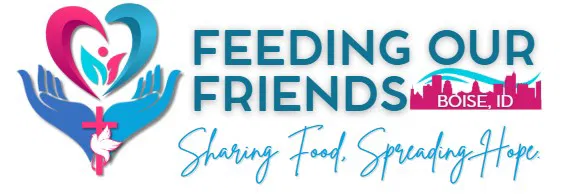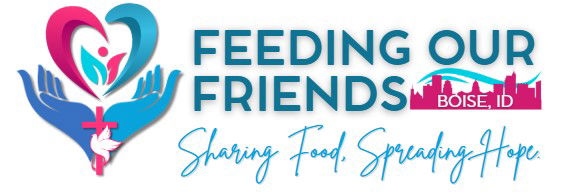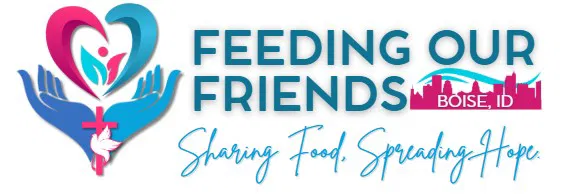F.A.Q
Unhoused in Boise
As of March 2025, the latest data on the unhoused in Boise, Idaho, comes from the 2023 Point-in-Time (PIT) count conducted in Ada County, which includes Boise. This count identified 687 individuals facing unhoused situations, showing a 6% increase since 2020.
Statewide, Idaho reported a total of 9,228 individuals experiencing unhoused situations, with 42% identified as disabled, 16% as chronically unhoused, and 6% as veterans.
These statistics highlight the ongoing challenges faced by the unhoused community in Boise and emphasize the importance of continued efforts to address and support those experiencing unhoused situations in the area.

Statewide, Idaho reported a total of 9,228 individuals experiencing unhoused situations, with 42% identified as disabled, 16% as chronically unhoused, and 6% as veterans.
These statistics highlight the ongoing challenges faced by the unhoused community in Boise and emphasize the importance of continued efforts to address and support those experiencing unhoused situations in the area.

Recent Trends
A December 2024 report revealed a sharp rise in food insecurity across Idaho, with an 86% increase in the number of individuals lacking enough food over a two-week period compared to 2021. This surge has placed added pressure on local food pantries and assistance programs.
These statistics underscore the ongoing challenges faced by Boise residents in securing sufficient nutrition. Local organizations are actively working to tackle these issues through a variety of support programs and community initiatives.

These statistics underscore the ongoing challenges faced by Boise residents in securing sufficient nutrition. Local organizations are actively working to tackle these issues through a variety of support programs and community initiatives.

Food Insecurity in Idaho
As of March 2025, the most recent comprehensive data on food insecurity in Boise, Idaho, is from 2022. While specific figures for Boise are limited, statewide data offers valuable insight into the challenges faced by residents.
Statewide Food Insecurity:

Statewide Food Insecurity:
- Overall Impact: In 2022, approximately 220,990 Idahoans experienced food insecurity, representing 11.4% of the state's population.
- Child Hunger: Among these, 67,590 were children, meaning 1 in 7 Idaho children faced food insecurity.
- Reports indicate a concerning rise in food insecurity across Idaho:
- A December 2024 report highlighted an 86% increase in the number of Idahoans lacking sufficient food over a two-week period compared to 2021.
- In February 2025, The Idaho Foodbank reported increased demand for food assistance, especially in rural areas, highlighting the ongoing struggle many families face in affording basic necessities.
- Prevalence: In 2022, Feeding America reported that 1 in 6 seniors in Idaho faced food insecurity, amounting to approximately 57,000 individuals.
- Idaho Foodbank Data: In fiscal year 2021, 24% of the individuals served by The Idaho Foodbank were seniors aged 65 or older.

Ways to Help
Feeding Those Less Fortunate
Q: Why is feeding the less fortunate important?
A: Access to nutritious food is essential for health and well-being. Providing meals helps reduce hunger, supports dignity, and strengthens communities.
Q: How can I help?
A: You can donate food, volunteer at shelters or meal programs, contribute financially to organizations, or organize a local food drive.
Q: What types of food are best to donate?
A: Non-perishable items like canned goods, rice, pasta, and protein sources (peanut butter, canned meats) are most helpful. Fresh food donations should follow local guidelines.
Q: Where can I find local programs that help feed the less fortunate?
A: Check with local food banks, shelters, churches, and community outreach groups. Many cities have organizations dedicated to providing meals and resources.
Q: Can I start my own food outreach?
A: Yes! Start by identifying the need in your area, gathering volunteers, securing a location, and partnering with local businesses or donors for food supplies.

Q: Why is feeding the less fortunate important?
A: Access to nutritious food is essential for health and well-being. Providing meals helps reduce hunger, supports dignity, and strengthens communities.
Q: How can I help?
A: You can donate food, volunteer at shelters or meal programs, contribute financially to organizations, or organize a local food drive.
Q: What types of food are best to donate?
A: Non-perishable items like canned goods, rice, pasta, and protein sources (peanut butter, canned meats) are most helpful. Fresh food donations should follow local guidelines.
Q: Where can I find local programs that help feed the less fortunate?
A: Check with local food banks, shelters, churches, and community outreach groups. Many cities have organizations dedicated to providing meals and resources.
Q: Can I start my own food outreach?
A: Yes! Start by identifying the need in your area, gathering volunteers, securing a location, and partnering with local businesses or donors for food supplies.

Is Feeding Our Friends a nonprofit organization?
Q: Is Feeding Our Friends, Boise ID a nonprofit organization?
A: Feeding Our Friends is not a registered nonprofit. We are a self-funded ministry group that relies entirely on the generosity of individuals and local supporters to provide meals to those in need. While we do not have official nonprofit status, every donation—whether food, supplies, or time—goes directly toward feeding the less fortunate in our community.

A: Feeding Our Friends is not a registered nonprofit. We are a self-funded ministry group that relies entirely on the generosity of individuals and local supporters to provide meals to those in need. While we do not have official nonprofit status, every donation—whether food, supplies, or time—goes directly toward feeding the less fortunate in our community.




